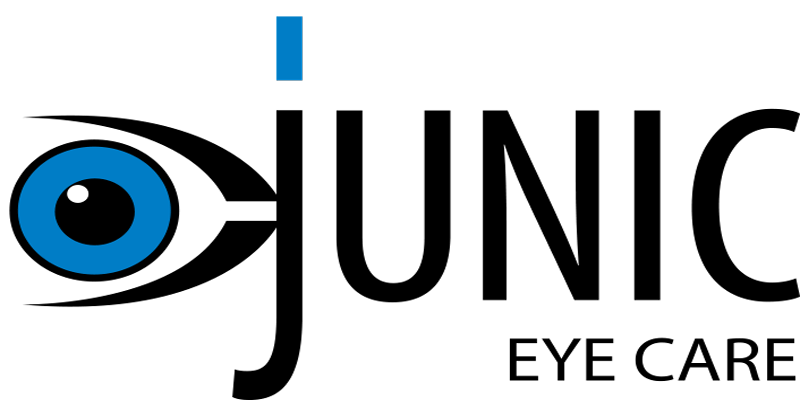Do you know what dangers might be lurking in the water when you go swimming with contact lenses? Taking a dip in the pool, ocean or fresh water be putting your eye health at risk. Even something as mundane as taking a bath or shower may be exposing your eyes to serious problems.
You might think “Surely daily disposable lenses are safe for swimming?”, but that’s not true. And while wearing swim goggles over your contacts might protect your eyes to some extent, they can’t prevent all risks associated with water exposure.
In this article I want to break down all the hazards that threaten your eyes if you happen to have contact lens eyewear.
Who am I? I’m Juliet Menakaya, the Owner and Principal Optometrist at Junic Eye Care in Canberra. I’ve spent years helping people maintain their vision and eye health, especially those with active lifestyles. I understand the challenges of balancing vision correction with outdoor activities like swimming and surfing. In this blog, I want to share important insights into the risks of swimming with contact lenses and offer safer alternatives that protect your eyes while you enjoy the water.
Take a moment to learn everything you need to know about eye health and water safety.
Why Swimming With Contact Lenses is a Bad Idea
Water Contamination and Infections:
How safe is the water you’re swimming in when it comes to your eyes? The primary risk of swimming with contact lenses is the exposure to harmful microorganisms like bacteria, viruses, and fungi. Even chlorinated pools aren’t entirely free from these pathogens. When your contact lenses absorb water, they also absorb these contaminants, which increases the likelihood of serious eye infections.
Oxygen Permeability:
Can your eyes breathe properly while swimming with contact lenses? Contact lenses are designed to allow oxygen to reach your cornea, keeping your eyes healthy. However, when they absorb water, this essential oxygen flow is restricted. Reduced oxygen permeability can lead to corneal hypoxia, where the cornea becomes starved of oxygen. This lack of oxygen may cause symptoms like redness, discomfort, and even blurred vision. Over time, repeated episodes can lead to more serious complications, compromising your overall eye health.
Lens Discomfort and Damage:
Water exposure can significantly affect how your lenses feel. When lenses absorb water, they can lose their adhesive properties, leading to discomfort or even lens dislocation. Prolonged exposure might cause them to swell, altering their shape and fit. This not only impacts your vision but can also cause irritation and redness. Repeated exposure can damage your lenses, reducing their lifespan and making them unsafe to wear.
Types of Eye Infections Linked to Swimming with Contact Lenses:
Who would have thought that a refreshing swim could lead to something as serious as an eye infection? For contact lens wearers, this is a real concern. Swimming with lenses can expose your eyes to various pathogens, leading to several types of eye infections, each with its own risks and challenges.
Bacterial conjunctivitis, commonly known as pink eye, is one of the most frequent infections linked to swimming with contact lenses. This condition occurs when bacteria, often Pseudomonas aeruginosa or Staphylococcus aureus, get trapped between the lens and the eye. The result is redness, irritation, and discharge that can make your eyes feel gritty and uncomfortable. While bacterial conjunctivitis can usually be treated with antibiotic drops, it’s still an unpleasant experience and one that’s easily avoidable by not wearing lenses in the water.
Acanthamoebic keratitis is a far more serious infection. Caused by the Acanthamoeba amoeba, this infection can occur when swimming in natural bodies of water, such as lakes or oceans, but it’s also possible in poorly maintained swimming pools. The amoeba latches onto the lens and burrows into the cornea, leading to severe pain, redness, and blurred vision. Treatment is often long and difficult, sometimes requiring months of medication. In the most severe cases, a corneal transplant may be necessary to restore vision.
Fungal keratitis is another potential outcome of swimming with contact lenses, particularly in fresh water. Fungi like Fusarium species can infect the cornea, causing pain, redness, and discharge. This infection is notoriously difficult to treat and often requires prolonged antifungal therapy. If left untreated, fungal keratitis can lead to permanent scarring of the cornea, significantly affecting vision.
Viral keratitis, often caused by adenoviruses present in water, is another risk. This condition can cause painful inflammation of the cornea, resulting in blurry vision and sensitivity to light. While antiviral treatments can help manage the infection, the recovery process can be slow, and the virus can linger, causing recurrent symptoms.
It might surprise some people to learn that chemicals added to swimming pools can further increase the risk of eye infections. While chlorine is meant to disinfect, it also strips away the natural protective barriers of the eye, making it easier for pathogens to take hold. This weakened defense, combined with the chemical contaminants absorbed by contact lenses, creates a perfect storm for eye infections. The water you swim in may seem harmless, but for contact lens wearers, it’s anything but.
To learn more about the dangers of eye infection from swimming with contacts, watch the following video by Dr Danielle Trief.
Alternative Vision Correction Options for Swimmers
If you’re an avid swimmer who relies on contact lenses, the idea of giving up clear vision in the water might seem daunting. But you don’t have to choose between enjoying your time in the pool and protecting your eyes from infections. Several safe and effective alternatives can help you see clearly while swimming without the risks associated with contact lenses.
One of the simplest solutions is non-prescription swim goggles. These create a barrier between your eyes and the water, keeping contaminants at bay. However, if you rely heavily on vision correction, non-prescription goggles may not provide the underwater eyesight clarity you need. That’s where prescription swimming goggles come in. These goggles are custom-made to match your vision prescription, giving you the sharp vision you’re used to, but without the risk of eye infections.
For those who enjoy more adventurous water activities like scuba diving, prescription diving masks are a great option. Divers who wear hard contact lenses may experience blurred vision after a dive, as nitrogen is unable to escape the cornea properly. As an alternative, prescription diving masks offer clear vision underwater, tailored to your vision needs, and ensuring you can see everything clearly while protecting your eyes.
If you’re a surfer or spend a lot of time on the water’s surface, prescription surf sunglasses might be what you need. These sunglasses offer the added benefit of UV protection, reducing the risk of conditions like pterygium (surfer’s eye) and cataracts while also providing clear vision. They’re designed to withstand the harsh conditions of sun, salt, and sand, making them a durable choice for active water enthusiasts.
For those looking to eliminate the need for daytime lenses altogether, orthokeratology (Ortho-K) lenses or LASIK surgery might be worth considering. Ortho-K lenses are worn overnight to gently reshape the cornea, providing clear vision during the day without the need for contact lenses or glasses. LASIK offers a more permanent solution, using laser technology to correct your vision so you can enjoy swimming without any corrective lenses at all. Both options provide freedom from contact lenses and reduce the risks associated with waterborne contaminants.
CONCLUSION
Swimming with contact lenses poses significant risks, including severe eye infections, lens damage, and long-term eye health issues. Prescription swim goggles, prescription diving masks, and prescription surf sunglasses provide safer, more effective vision correction for water activities.
Additionally, there are options like orthokeratology or LASIK eye treatment that can remove then need for vision correction completely, and these might be worth consideration.
Remember, neglecting proper eye care when it comes to water exposure can lead to irreversible damage, including corneal ulcers and vision loss.
Take control of your eye health today and make the smart choice to see an optometrist about safer options for swimming.
To visit our optometry practice, click the “Book Online” button at the top of the page or call (02) 6152 8585 today.
You’ll find our clinic conveniently located in the Molonglo Health Hub, just a short 10 minute drive from central Canberra, with plenty of free parking when you get here.

CANBERRA OPTOMETRIST
Juliet obtained her Doctor of Optometry degree from the University of Benin, Nigeria in 2006. She completed an internship programme before migrating to Australia, where she completed a master’s degree in public health at the University of Sydney in 2014. Following this, Juliet obtained a Master of Orthoptics from the University of Technology Sydney (UTS) in 2017.
Juliet has completed her competency in optometry examination with OCANZ (Optometry Council of Australia and New Zealand), and obtained her ophthalmic prescribing rights from ACO (Australian College Of Optometry Victoria). Juliet has worked in various positions, including retail Optometry, the Ophthalmology Department at Canberra Hospital, and more recently, at the John Curtin School of Medical Research (ANU).
As a dedicated Canberra optometrist, Juliet is passionate about helping people with low vision, and binocular vision anomalies hence her interests in Low Vision Rehabilitation, Eccentric Viewing Training and Paediatric optometry.






